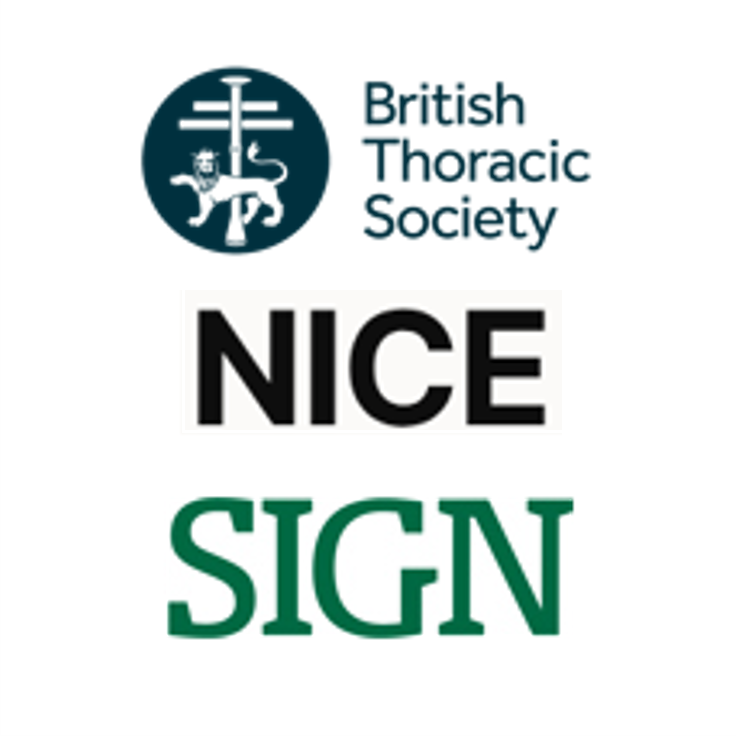Why the committee made the recommendation
No studies were found in which treatment was added to as-needed AIR, the recommended first treatment step in people aged 12 and over. This was unsurprising as the advantages of this as initial therapy have only recently been recognised. The committee therefore had to consider studies of people with asthma uncontrolled on other starting treatments, either a SABA when used as needed as sole therapy or when used in addition to regular low-dose ICS. They reasoned that these people would be sufficiently similar to people who are not controlled with as-needed AIR to allow recommendations to be made, but agreed that further research comparing different add-on therapies to ICS/formoterol as needed would be useful.
The evidence showed that regular low-dose ICS/LABA plus SABA as needed was superior to regular low-dose ICS plus SABA as needed. It produced greater improvements in lung function, and a reduction in the number of exacerbations and the amount of reliever therapy needed. Low-dose MART was also better than regular low-dose ICS plus SABA as needed in reducing asthma exacerbations, and people on this treatment needed less reliever therapy.
When low-dose ICS/LABA plus SABA as needed was compared with low-dose MART, the people using MART were found to have fewer exacerbations and hospital admissions. The committee noted that it would be simpler for people who are already using an ICS/formoterol inhaler to start the MART regimen than to convert to new inhalers. The committee also considered the economic analysis done for this update and agreed that the MART regimen would be a cost-effective use of resources compared with low-dose ICS/LABA plus SABA as needed.
If treatment with MART using a low-dose maintenance regimen does not provide adequate asthma control, the committee agreed that increasing the maintenance element of MART to moderate dose is the appropriate next step. Evidence supporting this was available from studies comparing moderate dose MART with both regular moderate dose ICS/LABA with SABA as reliever and with regular moderate dose ICS with SABA as reliever. MART was superior in both comparisons, most notably in reducing severe asthma exacerbations.
If treatment with MART using a moderate-dose maintenance regimen does not provide adequate asthma control, the evidence on how best to increase treatment is less clear cut. People whose asthma is uncontrolled at this stage will be using additional doses of ICS/formoterol for symptom relief and will effectively be on high-dose ICS. The committee agreed that ideally both FeNO and the eosinophil level should be checked, as well as carefully assessing whether the person is adhering to their prescribed treatment. If FeNO or eosinophil count is raised despite good adherence to this level of ICS, the risk of adverse outcomes is relatively high and a referral to an asthma specialist for further assessment and management is appropriate.
If control is inadequate but neither FeNO nor eosinophil count is raised, the committee considered the possible options to be the addition of either a leukotriene receptor antagonist (LTRA) or a long-acting muscarinic receptor antagonist (LAMA). Evidence was available looking at the addition of either an LTRA or a LAMA to baseline treatment with moderate-dose ICS or moderate-dose ICS/LABA, but the 2 options were only compared directly in 2 small studies. Although the comparison showed a reduction in exacerbations with a LAMA compared with an LTRA, the committee did not have much confidence in the result because of the small study population. They noted that it would be simpler to add an LTRA than a LAMA because the latter would involve needing to teach the person with asthma how to use an additional inhaler device, and the need for 2 inhalers is also less environmentally desirable. An LTRA is also cheaper, but there is a risk of significant side effects, particularly neuropsychiatric disturbances. It was agreed that there was no convincing reason to recommend one option over the other and that the person with asthma should decide which should be tried first after a discussion of the potential benefits and harms.
If these medicines have been tried and the person’s asthma continues to be inadequately controlled, further treatment is available using a variety of biologic agents. Use of these falls outside the scope of this guideline and requires specialist assessment. The committee therefore recommended that a referral should be made at this stage.
How the recommendation might affect practice
The recommendations for increasing treatment are different from current standard practice, but they apply to people with a new diagnosis of asthma. People with an existing diagnosis of asthma who are stable on their current therapy do not have to switch treatment. People on current pathways who need an increase in treatment will be switched to MART, but this is one of the current options. There should therefore not be significant disruption to asthma care. The new treatment steps are cost-effective for the NHS and in particular will reduce the number of exacerbations requiring treatment and the number of hospital admissions for asthma.
Full details of the evidence and the committee’s discussion are in evidence review Q: drug combinations and sequencing for asthma management.

